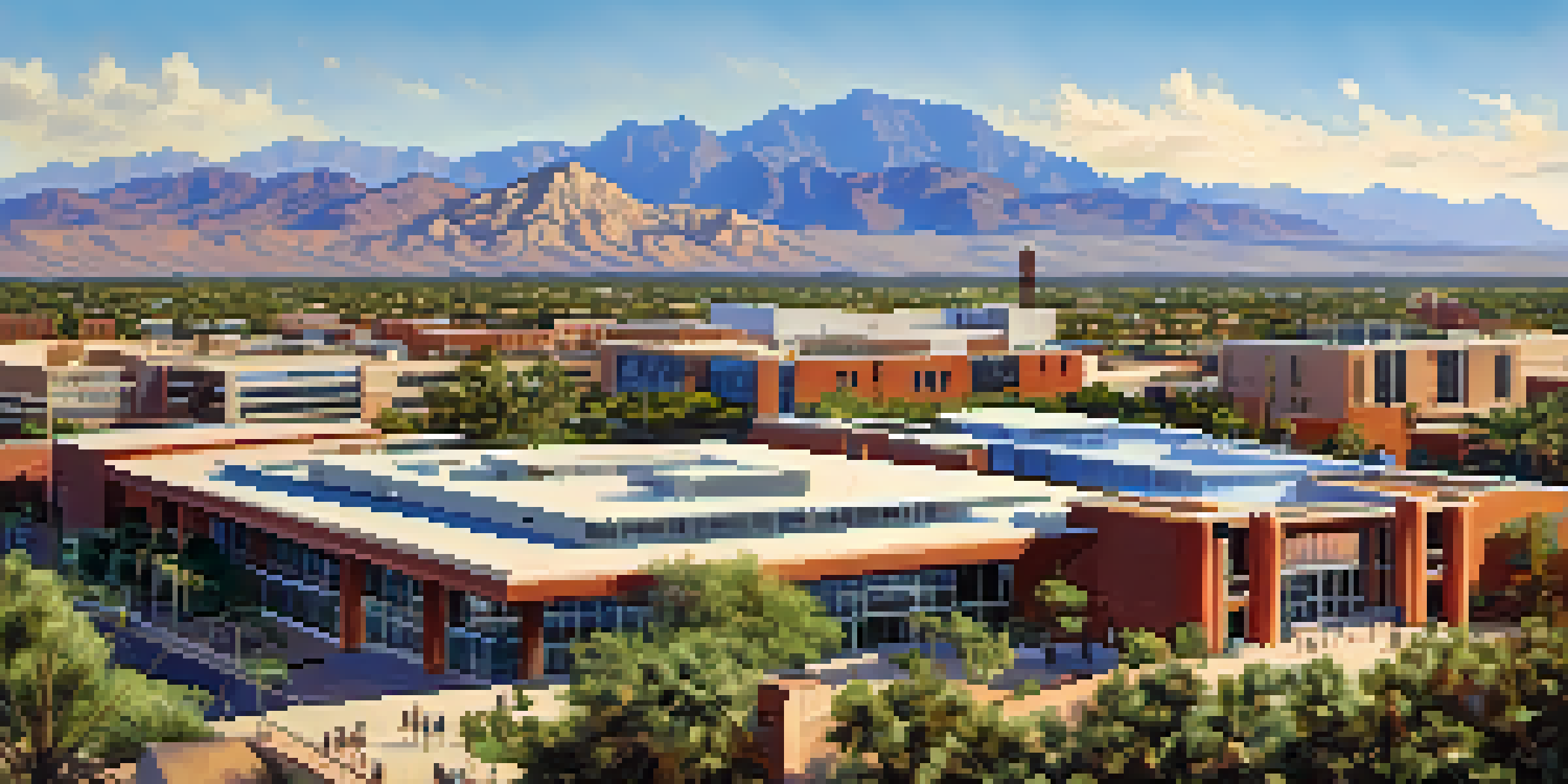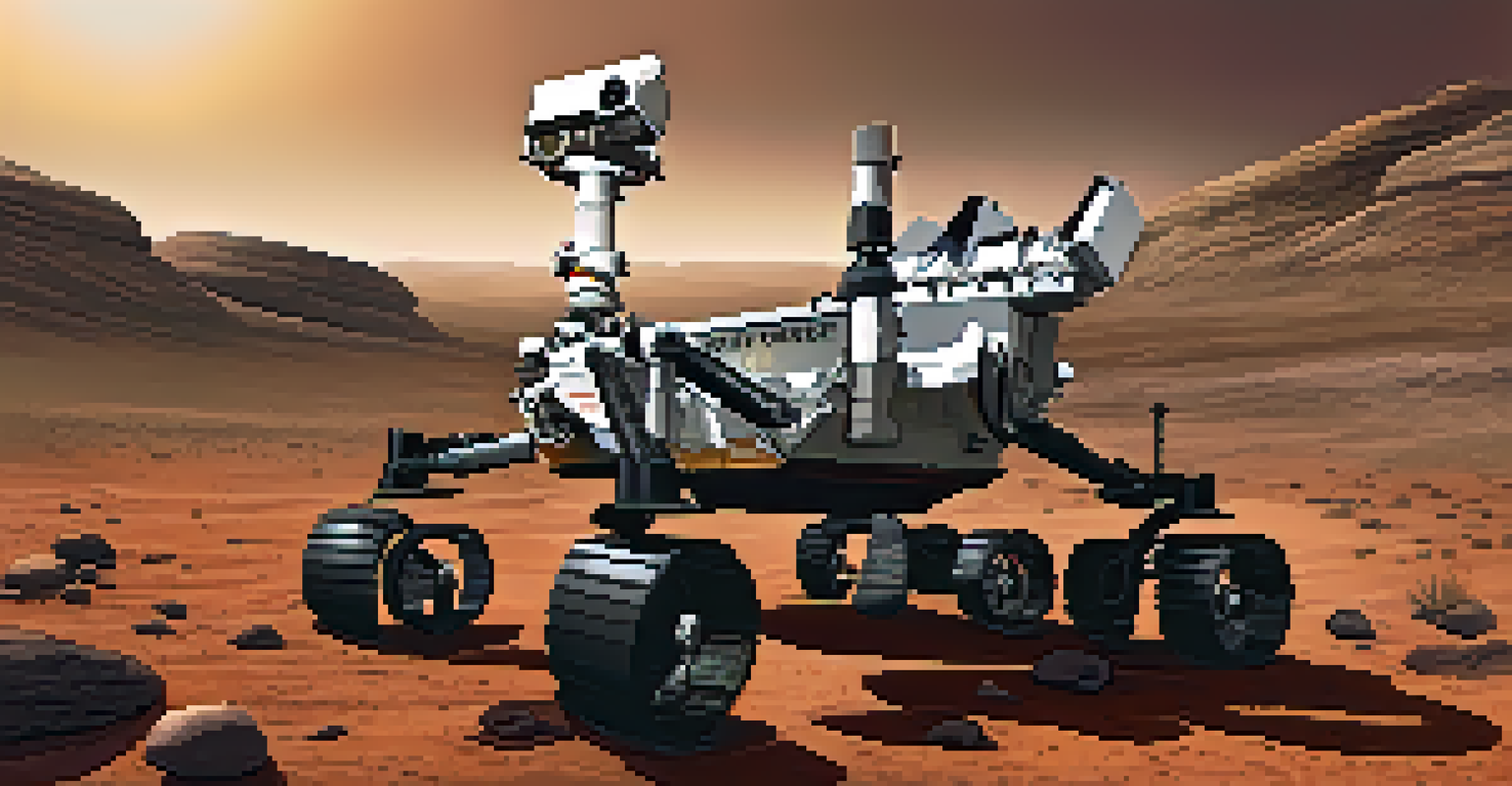The University of Arizona: A Hub for Space Research

Introduction to the University of Arizona's Space Focus
The University of Arizona (UA) has established itself as a leader in space research, thanks to its unique blend of academic excellence and innovative technology. With a commitment to pushing the boundaries of what we know about the cosmos, UA attracts top talent and resources from around the globe. This has made it a central hub for scientists, engineers, and students passionate about space exploration.
Research is what I'm doing when I don't know what I'm doing.
The university's location in Tucson, Arizona, offers an ideal environment for astronomical observation, with its clear skies and minimal light pollution. This geographic advantage complements the cutting-edge facilities and programs the school has to offer. As a result, UA serves as a launching pad for groundbreaking research and exciting discoveries.
UA's reputation in space research is not just based on its facilities but also on a rich history of contributions to significant space missions. From launching satellites to collaborating on Mars exploration projects, the university's endeavors have shaped our understanding of the universe.
Key Research Centers at the University of Arizona
At the heart of UA's space research efforts are several key centers, such as the Lunar and Planetary Laboratory (LPL) and the Steward Observatory. These institutions enable collaborative research and provide students with hands-on experience in various aspects of space science. They also host a variety of projects aimed at exploring celestial bodies and understanding planetary processes.

The LPL, for instance, has been involved in numerous high-profile missions, including the Mars rovers and the OSIRIS-REx mission, which aims to bring samples back from an asteroid. Such projects not only advance scientific knowledge but also inspire future generations of scientists and engineers. The synergy between these research facilities fosters a culture of innovation and discovery.
UA Leads in Space Research
The University of Arizona is a hub for space exploration, driven by its top-notch facilities, talented researchers, and strategic geographic advantages.
Additionally, the Steward Observatory plays a crucial role in astronomical research, providing access to advanced telescopes and observation tools. This combination of research centers ensures that UA remains at the forefront of space exploration and education.
Impact of UA on Mars Exploration Missions
The University of Arizona has made significant contributions to Mars exploration, particularly through its involvement in NASA's Mars missions. Faculty members and researchers from UA have played key roles in the development of instruments used in various rovers and landers, helping to unlock the mysteries of the Red Planet. Their expertise has directly influenced the success of these missions, leading to exciting discoveries.
The important thing is not to stop questioning. Curiosity has its own reason for existing.
One standout example is the Mars Science Laboratory, which includes the Curiosity rover. UA scientists were instrumental in designing the rover's ChemCam, an instrument that analyzes the composition of Martian rocks and soil. This innovation has provided invaluable data, helping researchers understand the geological history of Mars and its potential for past life.
Moreover, the university's ongoing research ensures that future Mars missions will benefit from their findings. This continuous cycle of research and exploration underscores UA's pivotal role in expanding our understanding of Mars and its potential for human exploration.
Innovative Research on Astrobiology at UA
Astrobiology, the study of life in the universe, is another exciting area of research at the University of Arizona. Researchers at UA are exploring the conditions necessary for life to exist beyond Earth, focusing on extreme environments that could host microbial life. This research not only enhances our understanding of life's resilience but also guides future exploration missions.
For example, the study of extreme environments on Earth, such as hydrothermal vents and acidic lakes, provides insights into potential habitats on other planets, including Mars and Europa. By simulating these conditions, scientists can test hypotheses about what forms of life might exist elsewhere in the universe. This approach bridges the gap between terrestrial and extraterrestrial studies.
Impact on Mars Missions
UA has significantly contributed to Mars exploration through the development of advanced instruments for NASA's missions, enhancing our understanding of the Red Planet.
UA's commitment to astrobiology also fosters collaboration with other disciplines, such as geology and planetary science. These interdisciplinary efforts enhance the university's research capabilities, making it a key player in the search for extraterrestrial life.
Educational Opportunities in Space Research at UA
The University of Arizona offers a wide range of educational opportunities for students interested in space research. From undergraduate degrees in astronomy and planetary science to advanced graduate programs, UA provides a comprehensive curriculum that prepares students for careers in space exploration and research. Students benefit from hands-on experiences and access to state-of-the-art facilities.
Moreover, the university hosts various outreach programs and workshops that engage students and the public in space science. These initiatives foster a sense of community and inspire a new generation of scientists. The university's commitment to education ensures that students not only learn about space but also contribute to ongoing research projects.
Internship opportunities with NASA and other space agencies further enhance students' real-world experience. By working alongside leading experts in the field, students gain valuable insights and skills that will serve them well in their future careers.
Collaboration with NASA and Other Agencies
Collaboration is a cornerstone of the University of Arizona's approach to space research. The institution has established strong partnerships with NASA and other space agencies, enabling joint projects that push the boundaries of exploration. These collaborations enhance research capabilities and provide students and faculty with unique opportunities to participate in groundbreaking missions.
For instance, UA's involvement in NASA's Artemis program aims to return humans to the Moon and eventually send astronauts to Mars. Researchers from the university are working on various aspects of this ambitious program, from developing new technologies to studying lunar geology. Such partnerships ensure that UA remains at the forefront of space exploration efforts.
Educational Opportunities Abound
The university offers diverse educational programs and hands-on experiences that prepare students for careers in space science and exploration.
These collaborative projects not only advance scientific knowledge but also foster innovation and creativity in research. By working together with other organizations, UA maximizes its impact on the field of space research.
Community Engagement and Public Outreach
The University of Arizona recognizes the importance of engaging the public in space research. Through various outreach programs, the university aims to ignite interest in science and space exploration among people of all ages. Initiatives such as public lectures, workshops, and interactive exhibits help demystify the complexities of space science.
One notable program is the UA Science Center, which offers hands-on activities and educational resources for families and school groups. Such initiatives not only educate but also inspire curiosity about the universe and our place within it. By making science accessible, UA fosters a community that values and supports space exploration.

Additionally, social media and online platforms allow the university to reach a broader audience, sharing discoveries and research updates with the world. This commitment to public engagement ensures that the excitement of space research is shared beyond the confines of academia.